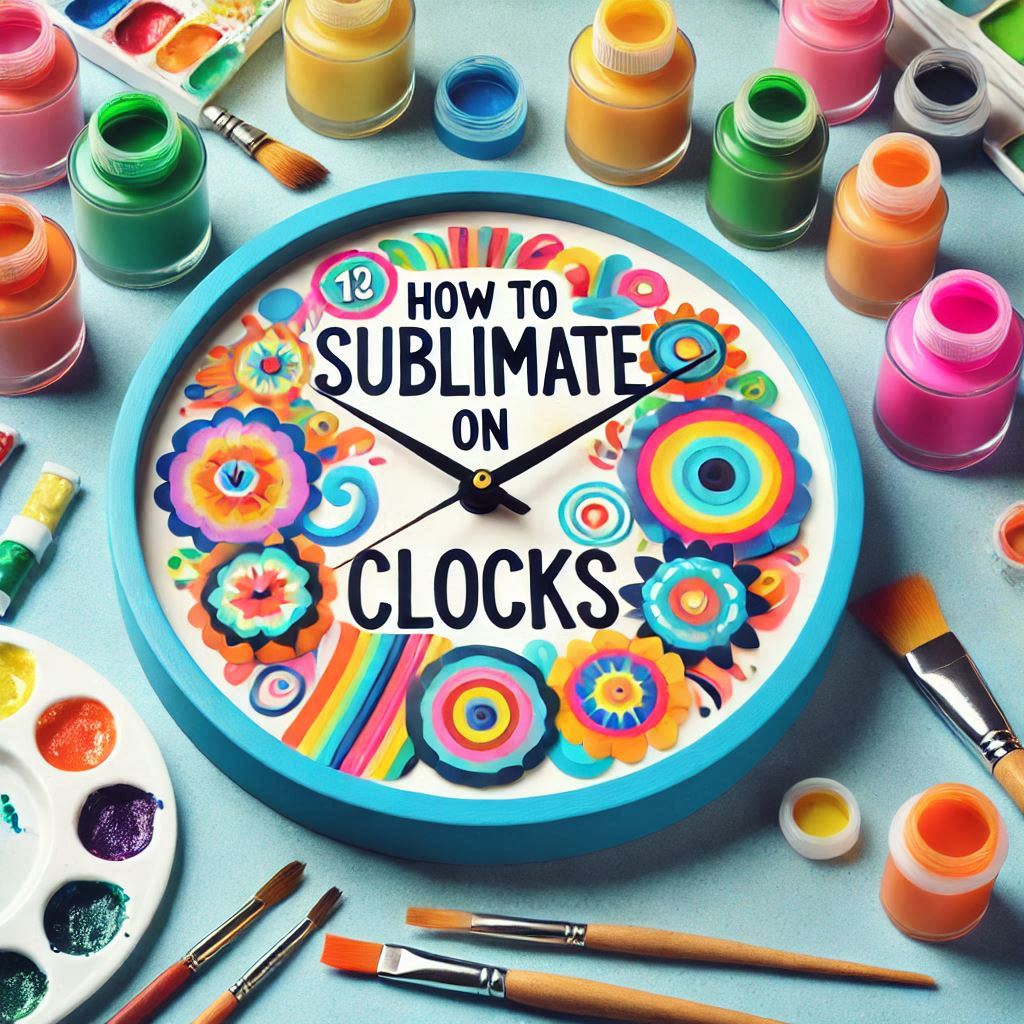Sublimating on clocks is a unique and creative way to create personalized, functional, and eye-catching timepieces. Whether you're designing a custom gift, enhancing your home decor, or promoting your brand, sublimated clocks are an excellent choice. They allow you to add vibrant, long-lasting designs that stand out. This guide will walk you through the step-by-step process of sublimating on clocks, ensuring your designs are crisp, clear, and permanent.
What You’ll Need for Sublimating on Clocks
Before starting the sublimation process on your clock, make sure you have the right tools and materials:
- Sublimation Printer: A printer that uses sublimation ink for transferring designs onto various surfaces.
- Sublimation Paper: Special paper designed for sublimation printing that ensures high-quality transfers.
- Heat Press Machine: A machine that applies both heat and pressure, essential for transferring your design onto the clock surface.
- Sublimation Clocks: Clocks made from materials like metal, ceramic, or wood that are coated with a sublimation-friendly coating.
- Heat-resistant Tape: To securely attach the sublimation paper to the clock during the pressing process.
- Sublimation Ink: High-quality ink specifically made for sublimation that produces vibrant, durable colors.
- Silicone Mat or Teflon Sheet: To protect the heat press and ensure even heat distribution.
- Protective Gloves: To safely handle hot materials once the heat press cycle is complete.
Step 1: Create or Choose Your Design
The first step in sublimating on clocks is designing your artwork. Popular ideas for clock designs include:
- Custom family names, monograms, or personal quotes for personalized gifts.
- Logos or branded designs for promotional items or corporate gifts.
- Beautiful patterns, nature-inspired images, or artistic illustrations for unique home decor.
Use design software like Adobe Illustrator, Photoshop, or Canva to create your artwork. Ensure that the design matches the dimensions of the clock face and always remember to mirror the design to ensure it transfers correctly onto the clock.
Step 2: Print Your Design
Once you’ve created your design, load the sublimation paper into your sublimation printer and adjust the settings for optimal results:
- Set the print quality to “High.”
- Select the “Mirror Image” option to reverse your design.
- Print your design using sublimation ink, and allow it to dry completely before continuing to the next step.
Step 3: Prepare the Clock
Before pressing, clean the clock surface with a lint-free cloth to remove any dust, dirt, or oils. This ensures that the design will adhere properly and transfer evenly.
Place the printed sublimation paper face down onto the clock’s sublimation coating. Use heat-resistant tape to secure the paper and prevent it from shifting during the heat press process.
Step 4: Set Up the Heat Press
Adjust your heat press machine to the appropriate settings for sublimating clocks. Common settings for different clock materials are:
- Temperature: 375-400°F (190-204°C)
- Time: 3-5 minutes (depending on the clock’s material and thickness)
- Pressure: Light to medium
Preheat your heat press to ensure consistent and even results.
Step 5: Sublimate the Clock
Carefully place the clock with the sublimation paper facing the clock face into the heat press. Cover it with a silicone mat or Teflon sheet to ensure even heat distribution and to protect your heat press from any direct contact with the clock.
Press down firmly and start the timer. Once the timer goes off, carefully remove the clock from the heat press using protective gloves to avoid burns.
Step 6: Cool and Remove the Sublimation Paper
Allow the clock to cool for a few minutes before gently peeling off the sublimation paper. The design should now be vibrant, crisp, and permanently bonded to the clock’s surface.
Step 7: Quality Check
Examine the clock for any imperfections, such as misalignment or faded areas. If necessary, adjust your heat press settings and repeat the process to achieve flawless results.
Tips for Successful Clock Sublimation
- Use High-Quality Sublimation Clocks: Choose clocks that are designed for sublimation, with a coating that allows for the ink to bond properly.
- Avoid Overheating: Too much heat can cause the design to blur or distort, so it’s important to use the correct temperature and time.
- Test Your Setup: Practice on a sample clock to fine-tune your settings and technique before starting on the final pieces.
- Protect the Design: Always ensure that the design is pressed evenly and at the correct temperature to ensure a long-lasting, vibrant result.
Conclusion
Sublimating on clocks is a fantastic way to create customized, high-quality timepieces that can serve as memorable gifts or unique home decor pieces. By following these simple steps and using the right materials and equipment, you can achieve professional results that will make your clocks stand out. Start creating custom clocks today and bring your creative ideas to life with the power of sublimation printing!



Comments ()